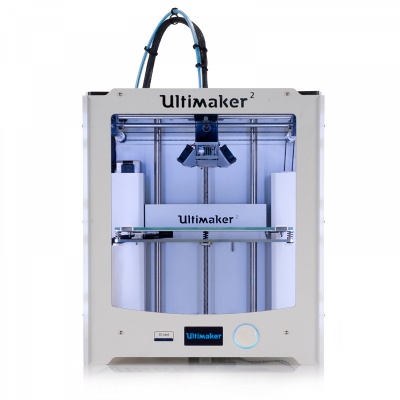Difference between revisions of "Ultimaker 2"
From MakeICT Wiki
Jump to navigationJump to search| Line 3: | Line 3: | ||
[[File:Ultimaker II.jpeg|x400px|left]] | [[File:Ultimaker II.jpeg|x400px|left]] | ||
| − | |||
== Technical Details == | == Technical Details == | ||
| Line 26: | Line 25: | ||
| Bed Temperature || 100 C Max. | | Bed Temperature || 100 C Max. | ||
|} | |} | ||
| + | |||
| + | |||
| + | |||
| + | |||
| + | |||
== Features == | == Features == | ||
Revision as of 00:37, 29 January 2016
Attention! This page or section is out of date. Help us out by modifying this page.
Details: Add instructions, links to manuals, etc.
Details: Add instructions, links to manuals, etc.
Technical Details
| Build volume | 230 x 225 x 205 mm |
| Filament types | PLA, ABS, CPE |
| Filament diameter | 2.85 mm, 1.75mm* |
| X/Y resolution | 0.125 mm |
| Z resolution | 0.02 mm |
| Nozzle diameter | 0.4 mm |
| Heated bed | Yes |
| Nozzle Temperature | 260 C Max. |
| Bed Temperature | 100 C Max. |
Features
Due to it's ease of use and ability to produce high Quality prints, the Ultimaker 2 is the most popular 3D printer at MakeICT. A couple of modifications have been made to allow it to use 1.75mm filament with minimal re-configuration.
Use
STL files can be sliced using Cura. The resulting gcode file is saved on an SD card and prints are run through the built in interface without needing to be connected to a computer.
